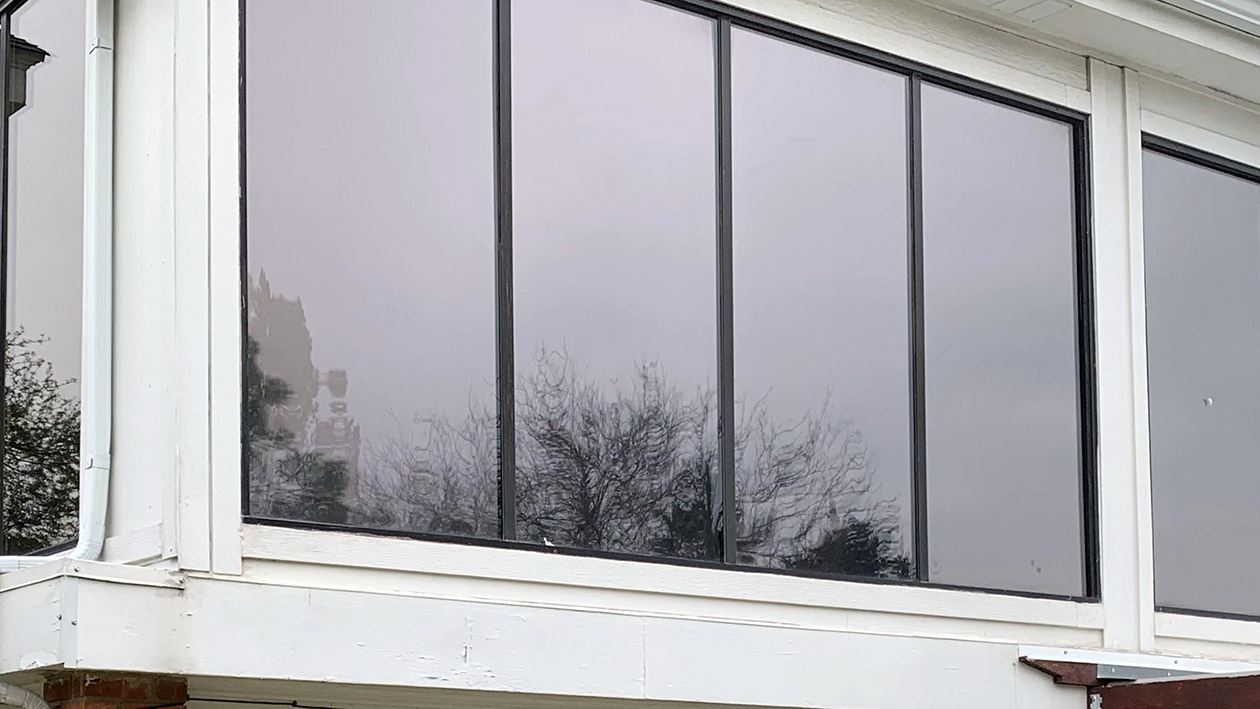
Yes, window tinting can significantly reduce heat in a house by providing up to 84% heat rejection for any heat coming through windows. This can help keep a house up to 20 degrees cooler, especially in the summer. Here are some key points about how window tinting reduces heat and its effectiveness:
How Window Tinting Reduces Heat
Residential window tinting works to reduce heat in a house through several mechanisms:
- It reflects solar radiation and infrared heat away from the windows, preventing it from entering the home.
- It acts as an insulating layer, slowing heat transfer through the glass.
- It blocks UV rays, which contribute to heat gain.
What Types of Window Tints Are Best for Reducing Heat in Homes?
Several types of window tints are effective for reducing heat in homes. Here’s an overview of the best options:
Solar Control Window Tint
Solar control window tinting film is an excellent choice for reducing heat in homes. This type of film:
- Reflects the sun’s rays, keeping your home cooler in summer months
- Can reflect up to 84% of the sun’s heat and 94% glare reduction
- Is ideal for reducing energy costs in the home
Ceramic window films are considered the most effective in reducing solar heat compared to other types of window tinting. They offer:
- Excellent temperature regulation
- Appropriate insulation to help maintain indoor temperatures
- Privacy benefits, making them a good choice for homes in densely populated areas
Carbon film tinting is another effective option for heat reduction in homes. These films provide:
- Protection against UV and infrared radiation
- Prevention of excess heat from entering the home
- Lower overall cooling costs
- A stylish matte appearance
Metallised Films
Metallised window films are known for their durability and heat-reducing properties:
- They reflect colour from the outside, creating a mirror-like appearance
- Offer excellent temperature regulation
- Provide UV protection
- Can reinforce windows, adding protection against storms and burglary
Read more about choosing the right window tint for your home in our article on ‘How dark should I tint my home windows‘, or you may prefer our article on the differences between reflective and non-reflective tints.
Comparison of Heat Rejection Percentages
Different types of window tints offer varying degrees of heat rejection:
- Ceramic Window Tints: Up to 84% heat rejection, 94% glare reduction
- Carbon Window Tints: Up to 60% heat rejection
- Metallised Window Tints: Up to 50% heat rejection
- Dyed Window Tints: Up to 30% heat rejection
When choosing a window tint for heat reduction, look for options with a low solar heat gain coefficient (SHGC). The SHGC measures how much heat can pass through the film and into your home. A lower SHGC means less heat can pass through the tint.
In summary, ceramic and solar control window tints are generally the most effective for reducing heat in homes, followed by carbon and metallised films. The choice will depend on your specific needs, budget, and the climate in your area.
Overall Heat Reduction Statistics
- Window tinting can filter 40-71% of solar heat through windows.
- It can keep a house up to 20 degrees cooler, especially in summer.
- Some high-performance window films block up to 80% of incoming solar heat.
If you live in a hot part of Sydney and need to pair your window tint with other heat-blocking mechanisms, window screens can reduce indoor temperatures by an average of 5.5°C and 4.2°C in different spaces, leading to a 50% and 40% reduction in cooling demand, respectively. However, they may slightly increase heating demand during winter [1].
Additional Benefits
Beyond heat reduction, window tinting also provides:
- UV protection (up to 99% UV ray reduction)
- Glare reduction (up to 82%)
- Increased privacy
- Energy savings on cooling costs
- The heat reduction benefits also apply to vehicles
Choosing the Right Tint to Reduce Heat in Your Home
When selecting a window tint to reduce heat:
- Look for options with a low solar heat gain coefficient (SHGC)
- Consider factors like heat rejection, UV protection, and durability
- Consult with a professional from EverClear Window Tinting to choose the best option for your specific needs and local climate
In summary, window tinting is an effective way to reduce heat gain in a house. High-quality films can block a significant percentage of solar heat, leading to a more comfortable indoor environment and lower cooling costs. If you want more information check out our complete guide on how to stop heat coming through your windows.
[1] Mousa, W., Lang, W., & Auer, T. (2017). Assessment of the impact of window screens on indoor thermal comfort and energy efficiency in a naturally ventilated courtyard house. Architectural Science Review, 60, 382 – 394. https://doi.org/10.1080/00038628.2017.1329134.

